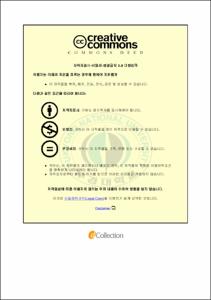탄소섬유를 이용한 PE pipe의 전기융착과 Nano TiO2가 에폭시의 열적 특성에 미치는 영향에 관한 연구
- Alternative Title
- The development of electro fusion fittings using carbon fiber And study on thermal properties of epoxy/TiO2 nano composites
- Abstract
- What makes change to curing mechanism was experimented when nano TiO2 was dispersed into epoxy(Bisphenol A, YD-128) with different curing agents.
There are two different models in nano composites.
One is attractive model, which has chemical attraction between nano particles and matrix. This model decreases the mobility of composites because distance between each polymer become shorter. Properties of attractive model are high modulus and tensile strengths, high Tg due to high cross-linked density.
The other model is repulsive model, which hasn't chemical attraction between nano particles and matrix. So its distance between each polymer is long, their mobility increases. That's why Tg was reduced and also tensile strengths, modulus were decreased.
Nano TiO2(P90, AEROXIDE) was dispersed into epoxy, and was mixed with Jeffamine(D-180), at room temperature for its curing condition. The exothermic temperature and Tg was reduced, and as increasing amounts of TiO2. Also, properties of tensile strengths and strains were increased as increasing amounts of TiO2 until 3 wt.%. Because it was dispersion strengthening effect caused nano particles. However, there properties were decreased at 5 wt.% of TiO2, because TiO2 was agglomerated in epoxy.
Same amounts of TiO2 was dispersed into epoxy, and was mixed with NMA and BDMA, hardener, at high temperature for its curing condition. The exothermic temperature and Tg rises as increasing amounts of TiO2. Also, tensile strengths and strains were decreased as increasing amounts of TiO2. But their values are higher than pure epoxy except 5wt.% of TiO2.
The results of curing epoxy using two different curing agents, epoxy/TiO₂ nanocomposites using Jeffamine were estimated repulsive model. On the other hand, epoxy/TiO2 nanocomposites using NMA were considered for attractive model. The chemical interaction of nanocomposites will be researched continuously more detail.
- Issued Date
- 2011
- Awarded Date
- 2011. 2
- Type
- Dissertation
- Publisher
- 부경대학교
- Alternative Author(s)
- Yoo-Sung Ha
- Affiliation
- 부경대학교 대학원
- Department
- 대학원 재료공학과
- Advisor
- 문창권
- Table Of Contents
- 제 1부 탄소섬유를 이용한 PE pipe의 전기융착
Abstract
1. 서 론 1
2. 이론적 배경 3
2.1. Polyethylene 3
2.2. Carbon fiber 5
2.3. Fusion 9
2.3.1 전류에 의한 발열 9
2.3.2 융착 11
2.3.3 전기융착 15
3. 재료 및 실험방법 16
3.1. 재료 16
3.2. 시험편 제작 16
3.3. 실험방법 18
3.3.1 소켓의 발열실험 18
3.3.2 파이프의 융착에 따른 발열실험 19
3.3.3 인장시험 21
3.3.4 현미경 촬영 21
4. 결과 및 고찰 22
4.1. 전류에 따른 소켓의 발열온도 22
4.2. 전류에 따른 파이프의 융착온도 25
4.3. 융착된 파이프의 인장강도 29
4.4. 미세조직 관찰 32
5. 결 론 35
제 2부 Nano TiO2가 에폭시의 열적 특성에 미치는 영향 연구
Abstract
1. 서 론 39
2. 이론적 배경 41
2.1. 에폭시 수지 41
2.2. 경화제와 촉매 43
2.3. TiO2 나노입자 44
2.4. Nanocomposites의 Model 45
2.5. 열분석법 47
2.5.1 열경화 반응 48
2.5.2 DSC(Differential Scanning Calorimetry) 49
3. 재료 및 실험방법 50
3.1. 재료 50
3.2. 시험편 제작 54
3.3. 열분석 56
3.3.1 발열 반응 56
3.3.2 DSC 56
3.4. 인장시험 58
4. 결과 및 고찰 59
4.1. 경화열 측정 59
4.2. DSC 측정 64
4.3. 기계적 물성 67
5. 결 론 72
[ 참 고 문 헌]
- Degree
- Master
- Files in This Item:
-
-
Download
 탄소섬유를 이용한 PE pipe의 전기융착과 Nano TiO2가 에폭시의 열적 특성에 미치는 영향에 관한 연구.pdf
기타 데이터 / 2.26 MB / Adobe PDF
탄소섬유를 이용한 PE pipe의 전기융착과 Nano TiO2가 에폭시의 열적 특성에 미치는 영향에 관한 연구.pdf
기타 데이터 / 2.26 MB / Adobe PDF
-
Items in Repository are protected by copyright, with all rights reserved, unless otherwise indicated.